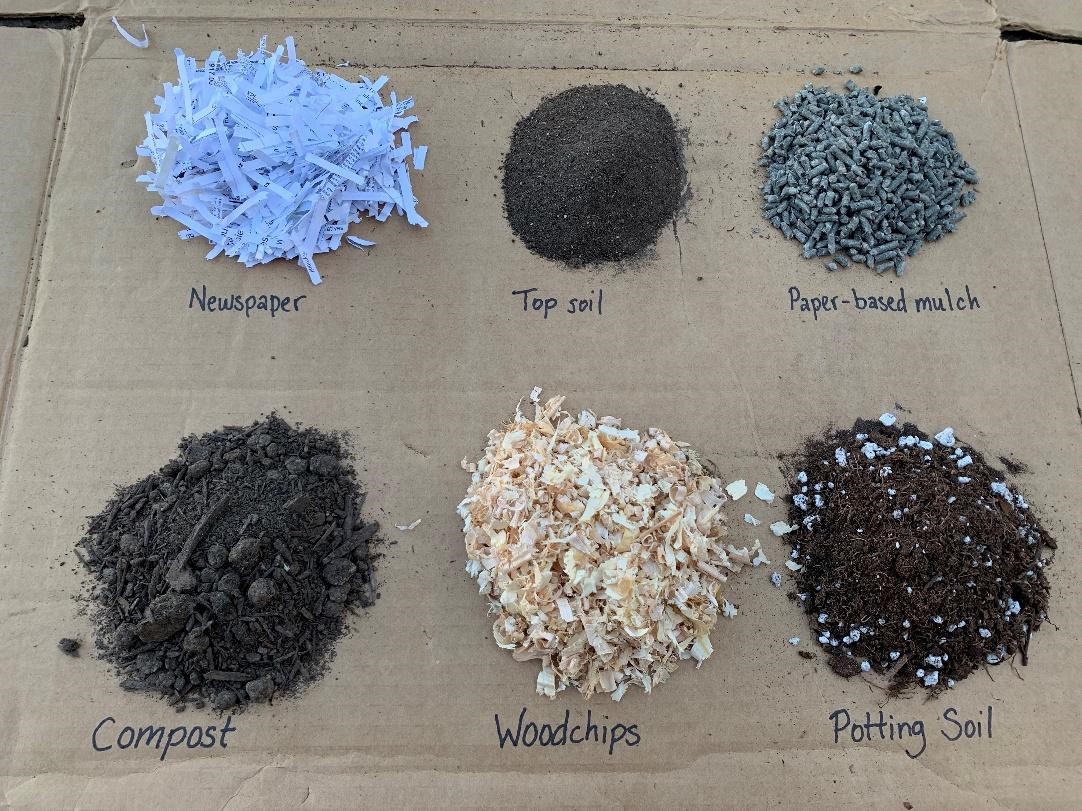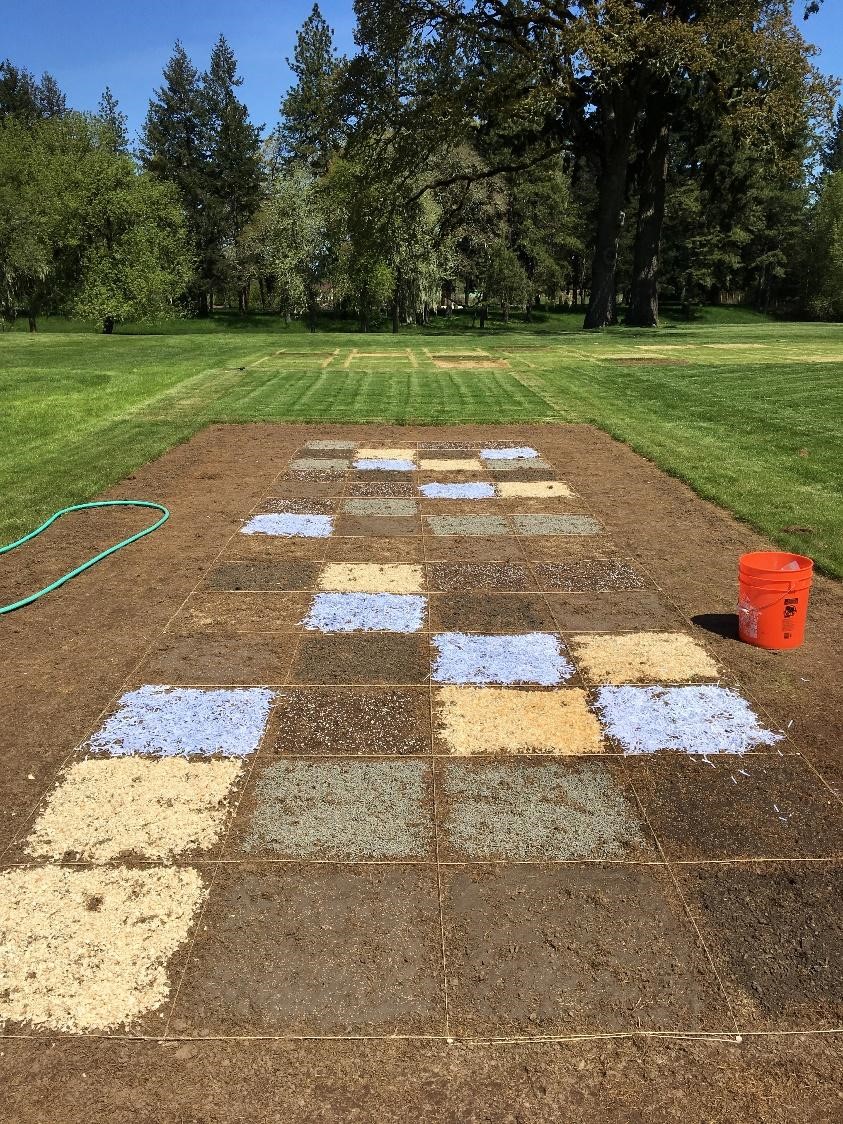By Emily Braithwaite and Alec Kowalewski, Oregon State University
It’s not uncommon for homeowners to begin using commercial “patch and repair” products on their lawns to seed bare or damaged areas from the previous seasons. These products contain about 85 to 90% inert matter (i.e. wood or paper-based mulch) to help retain moisture, and the other 10 to 15% is fertilizer and grass seed. Typically, these “patch and repair” products are comprised of other grass species (tall fescue and perennial ryegrass) and very few of them are fine fescues. The overall cost per pound of seed in these pre-made mixes is very high, so researchers at Purdue and Oregon State decided to test seed mixed with materials available at nurseries or garden supply stores. This included newspaper, topsoil, compressed paper mulch, compost, wood chips, potting soil, and no mulch material (Figure 1).
All treatments included a 95% (by volume) mulch ingredient, 0 or 1% starter fertilizer, and 5% fine fescue seed mix (strong creeping red fescue, Chewings fescue, hard fescue, and slender creeping red fescue). The ingredients were mixed by hand in a 5-gallon bucket and hand seeded onto 2’ x 2’ plots in April 2019 (Figure 2). Once treatments had been seeded, the area received daily irrigation to promote establishment.
The type of mulch had a significant impact on seed emergence and establishment. The wood chips, newspaper shreddings, and pressed paper mulch inhibited establishment early on. Although these plots had a good stand of fine fescue, we don’t recommend using those materials in a patch and repair mix. Using potting soil or compost provided for the quickest emergence of fine fescues in this trial. This could be due to those materials holding moisture better, and providing warmth and cover to the seed which sped up germination. The compost in particular required the fewest number of days to reach 50, 75, and 90% establishment (Braun et al., 2020).
For more detailed information about this study see: Braun, R.C., A.J. Patton, E.T. Braithwaite and A.R. Kowalewski. 2020. Establishment of low‐input turfgrass from seed with patch and repair mixtures: Mulch and starter fertilizer effects. Crop Science 60(6):3362-3376. https://doi.org/10.1002/csc2.20266

